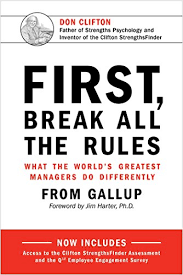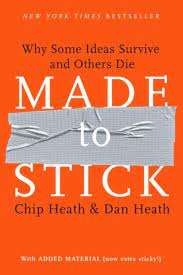As an executive at a publishing house for decades I read dozens of business books. Some I read for my own interest. Others were assigned to me by my boss for our team to read.
Too many of these were filled with abstract ideas, gave few examples of how to put the theory into practice, had longs lists of to-do’s, were based too much on one person’s experience, or simply had too few ideas.
The best of them kept their audience firmly in mind. The authors knew their readers were busy people who needed fresh, practical ideas on specific topics. They had to keep the attention of people who were distracted by dozens of problems needing immediate attention, people who wanted help—right now. How did they do that?
1. Stories. Some business books (which shall be nameless to protect the guilty) give theory or outlines without engaging the human element. Stories engage our passions. But they also use stories to make principles concrete. Often we don’t know how to put an idea into practice in our own context until we see an example even if it is in a completely different setting.
 One of the most memorable pieces of leadership advice I ever read was in First, Break All the Rules. Counterintuitively the authors said not to spend a lot of time trying to fix weaknesses in employees. Rather concentrate on their strengths and on your best employees. That seemed odd to me until they told a concrete story of Jean P. whose average for data entry was 50% higher than the national average. Her manager helped her set goals to improve and track her progress. In three months she doubled her performance. So she set new goals and in six months she doubled that! (p. 177)
One of the most memorable pieces of leadership advice I ever read was in First, Break All the Rules. Counterintuitively the authors said not to spend a lot of time trying to fix weaknesses in employees. Rather concentrate on their strengths and on your best employees. That seemed odd to me until they told a concrete story of Jean P. whose average for data entry was 50% higher than the national average. Her manager helped her set goals to improve and track her progress. In three months she doubled her performance. So she set new goals and in six months she doubled that! (p. 177)
Suddenly the point became clear. Rather than spending a lot of time trying to get five average people on the team to improve by 10%, far more could be achieved by giving focused attention to star performers (in data entry or sales or case loads). When I read that, I got it! And it transformed how I managed.
2. Practical. The best books don’t open with several chapters of theory and then offer concrete advice at the end. Rather they mix theory and practice in every chapter. Unless readers feel they will get something they can use right away, they will give up on the book.
3. Substance. I am often annoyed by business books which “are magazine articles with a very high view of themselves.”* Books that stretch out a single, thin idea are exasperating. They waste my time. While most readers won’t tolerate a thick, academic approach, they do want something that is based on solid research which has been distilled in a way that doesn’t talk down to them. Which brings us to the next point.
4. Simplicity. It’s hard to put something into practice that you can’t remember. It’s also hard to put something into practice that is overly complicated. Don’t get me wrong. I love subtly and nuance and balance and sophistication in everything I read. Sometimes I’m able to gather the main points myself. But it is so much better if authors could do that for us.
 One of the best business books I’ve read is, under the surface, a manual on how to write a business book. Made to Stick by Chip and Dan Heath is for those who have an important message to convey—teachers, sales managers, team leaders, coaches, writers, parents, entrepreneurs talking to investors, yes, . . . and those writing business books.
One of the best business books I’ve read is, under the surface, a manual on how to write a business book. Made to Stick by Chip and Dan Heath is for those who have an important message to convey—teachers, sales managers, team leaders, coaches, writers, parents, entrepreneurs talking to investors, yes, . . . and those writing business books.
They highlight six points which they summarize in a memorable acronym SUCCES—Simplicity, Unexpectedness, Concreteness, Clarity, Emotion, Stories. And they practice what they preach, using all six of these features in their book to explain each of the six points.
No one formula is right for every book. But if you are able to incorporate even some of the elements the Heath brothers encourage, regardless of the kind of book you are writing, then you’ll definitely be in business.
—
*As my friend Steve Board once put it.

 Buy-In. David Logan, professor at the University of Southern California’s Marshall School of Business notes: “Asking for someone’s ‘buy-in’ says, ‘I have an idea. I didn’t involve you because I didn’t value you enough to discuss it with you. I want you to embrace it as if you were in on it from the beginning, because that would make me feel really good.’”
Buy-In. David Logan, professor at the University of Southern California’s Marshall School of Business notes: “Asking for someone’s ‘buy-in’ says, ‘I have an idea. I didn’t involve you because I didn’t value you enough to discuss it with you. I want you to embrace it as if you were in on it from the beginning, because that would make me feel really good.’” Freakonomist Steven Levitt tells us just
Freakonomist Steven Levitt tells us just